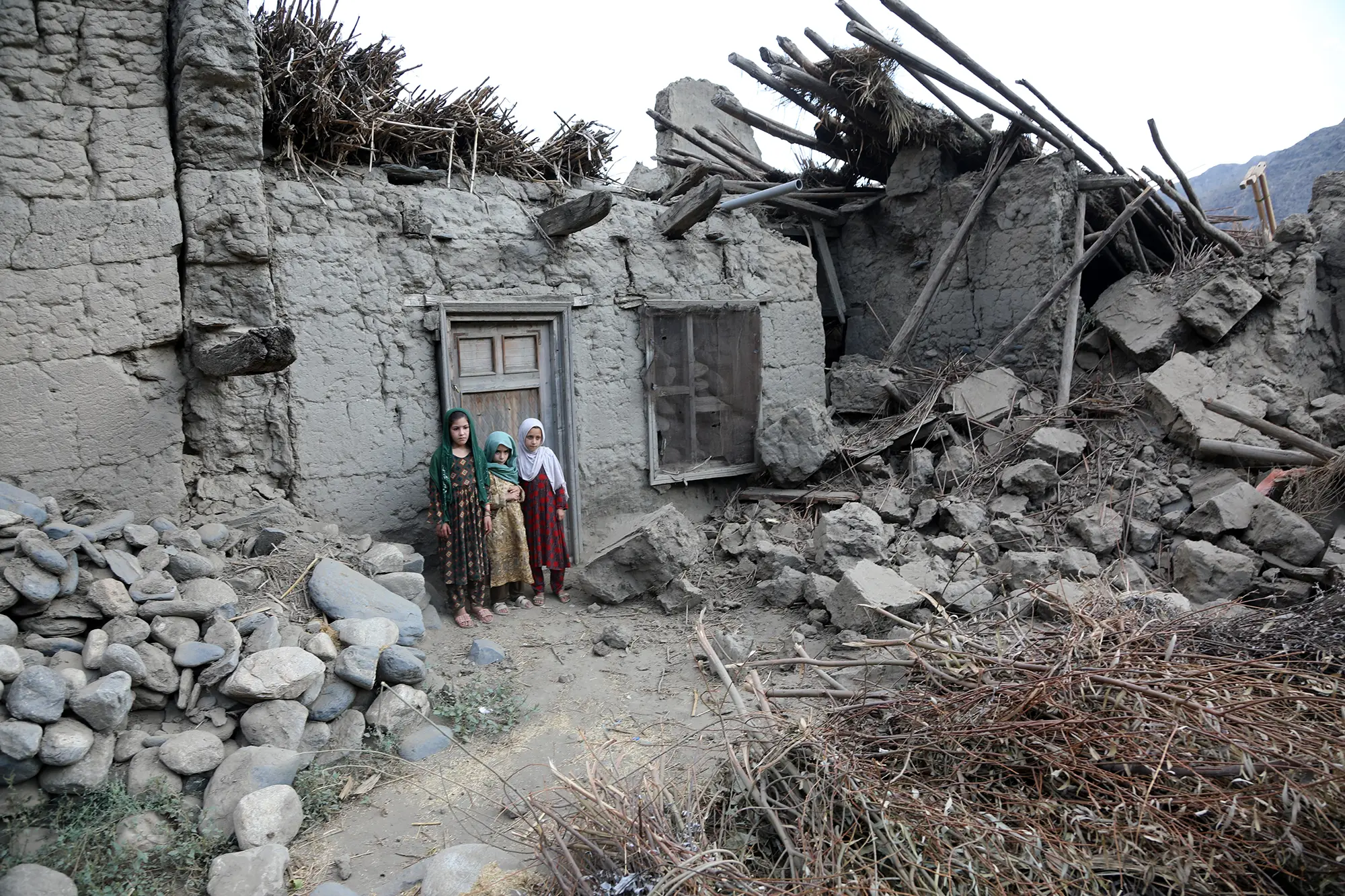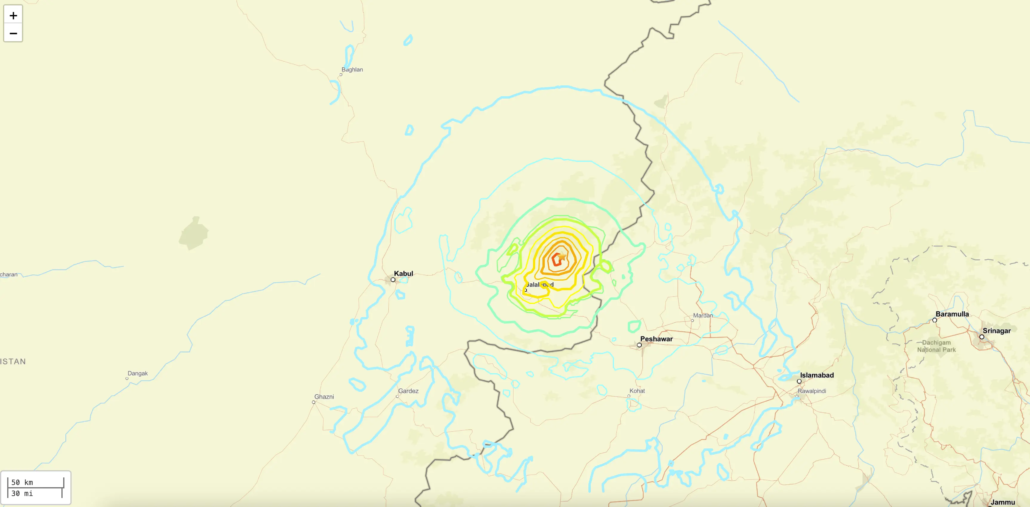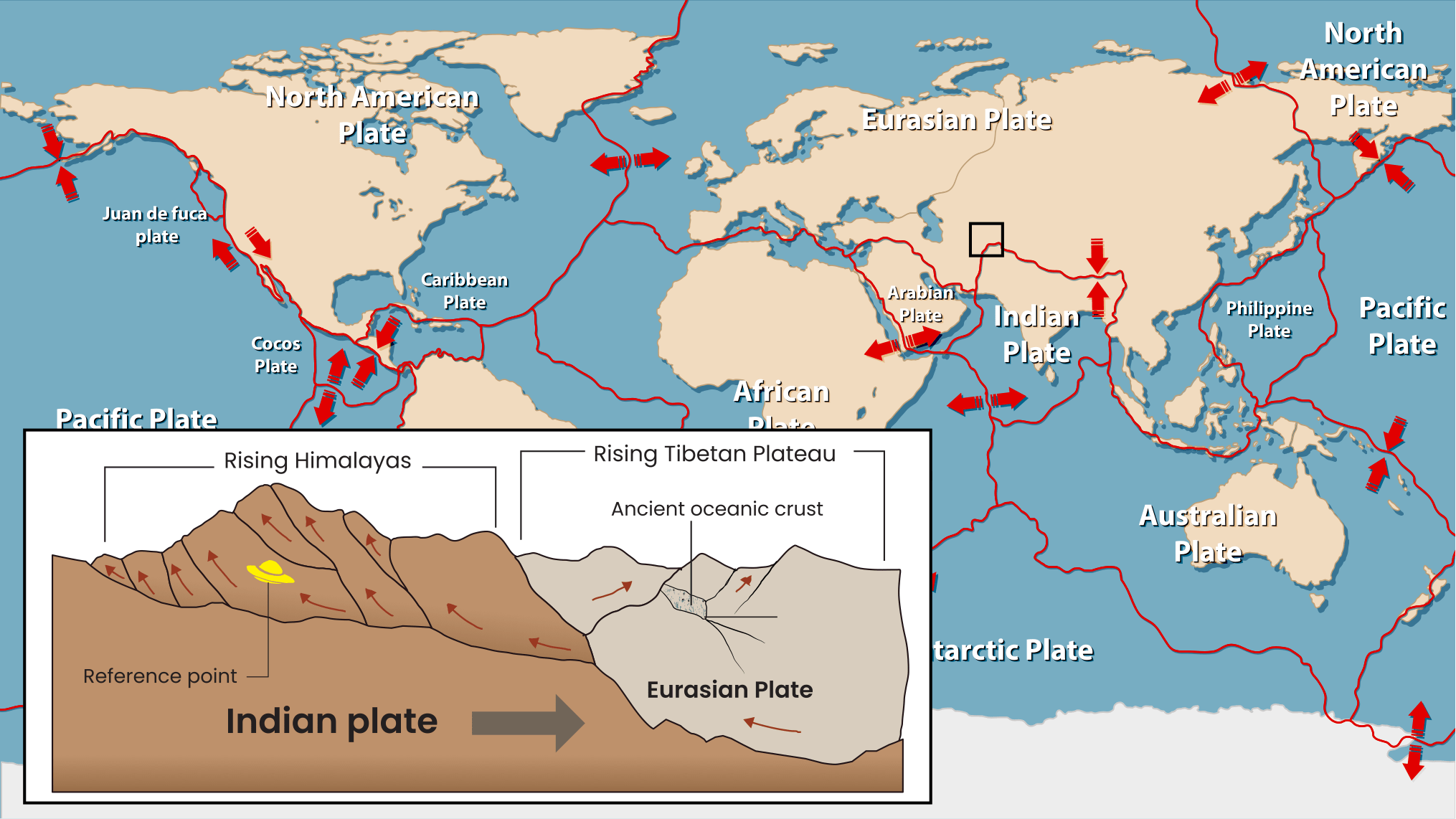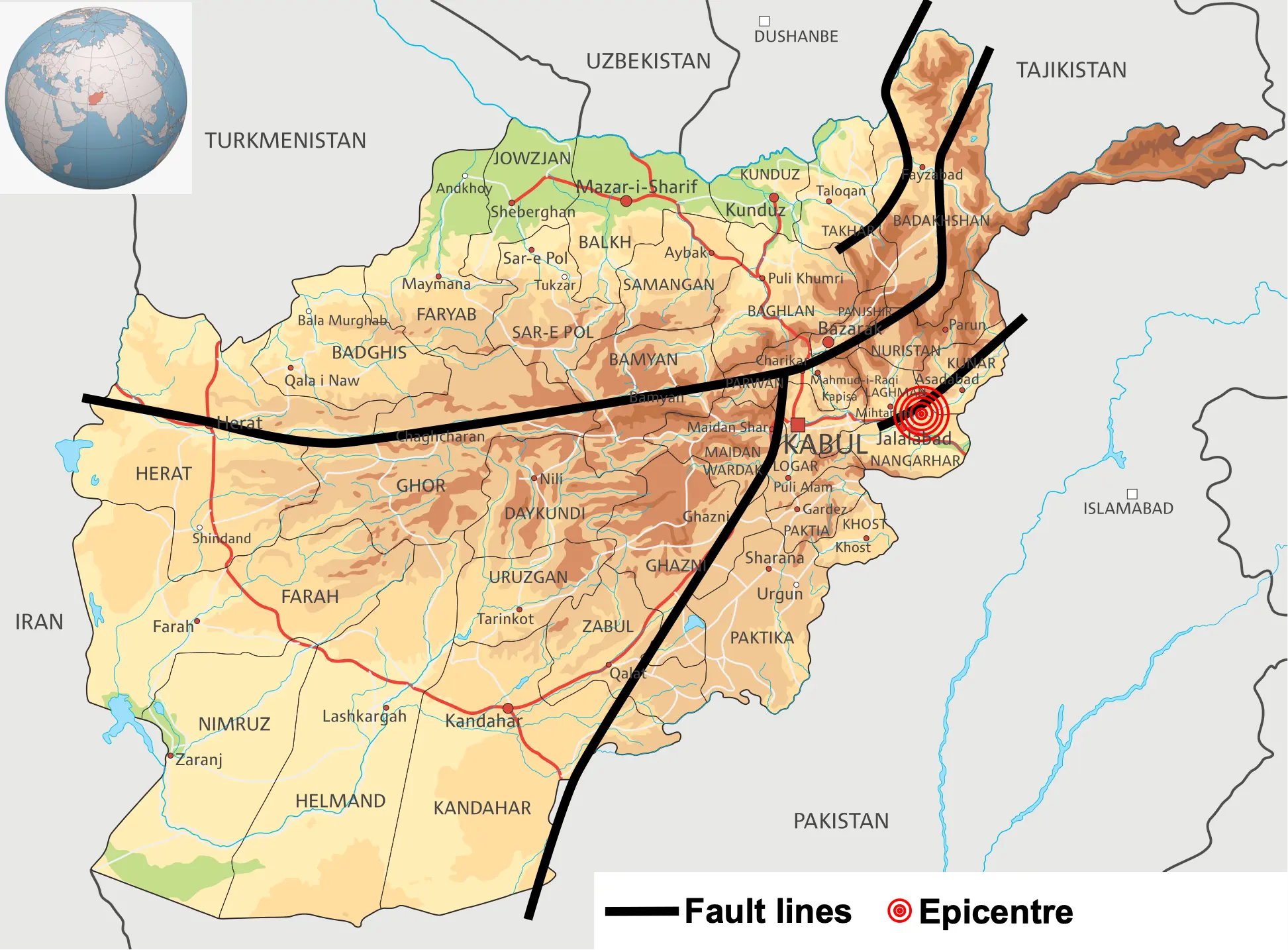Date: September 2025
Where: Eastern Afghanistan, near Jalalabad and the border with Pakistan.
Quick facts
- Magnitude: 6.0
- Depth: 8 km
- Epicentre: near Jalalabad, Nangarhar province
- Deaths: 2,200+
- Injured: 3,600+
- Homes destroyed/damaged: 6,700+
- UN appeal: $140 million
What happened?
On 31 August 2025, a magnitude 6.0 earthquake struck eastern Afghanistan. The epicentre was about 27 km from Jalalabad, a large city in Nangarhar province. The quake was shallow (8 km deep), which made the shaking especially strong. Tremors were felt 140 km away in Kabul and even across the border in Pakistan.
USGS Afghanistan earthquake map – view here
The earthquake hit at night, when most families were indoors. More than 2,200 people died, over 3,600 were injured, and at least 6,700 homes were damaged or destroyed. Villages in steep valleys, such as Chawki and Nurgal (Kunar province), were flattened. Some people were trapped under rubble for hours before rescuers arrived.
Why do earthquakes happen here?
Afghanistan lies where the Indian Plate pushes into the Eurasian Plate. Pressure from this collision creates mountains and faults in the Earth’s crust.
This earthquake was caused by thrust faulting – one block of rock was forced up over another. Because the quake began close to the surface, shaking at ground level was intense.
Keywords:
Epicentre: the point on the Earth’s surface above where the quake starts.
Focus: the underground point where rocks first break.
Aftershock: a smaller quake that follows the main one.
Shallow quake: starts close to the surface and often causes more damage.
Primary and secondary effects
Geographers split impacts into primary effects (caused directly by the hazard) and secondary effects (knock-on impacts that follow).
Primary effects of the earthquake:
- Buildings collapsed, especially mud-brick homes.
- Over 2,200 People were killed and 3,600+ injured by falling walls and roofs.
- Roads and bridges were destroyed, cutting off villages.
- Hospitals were overwhelmed, including Jalalabad’s main hospital.
Secondary effects:
- Landslides blocked roads, delaying rescues and cutting off aid.
- Flash floods, which had already hit the area before the quake, worsened as landslides blocked rivers.
- Homelessness and disease risk, as families slept outside without clean water or shelter.
- Women and children are especially vulnerable – Taliban restrictions meant fewer women could reach hospitals quickly, and there are no female rescuers in the field.
The context: Why Afghanistan is so vulnerable
Afghanistan faces many challenges that made this disaster worse:
- Taliban rule: Since 2021, the Taliban have controlled Afghanistan. Most of the world does not recognise their government. This means international aid is limited, and some foreign organisations no longer operate in the country.
- Economic collapse: Before 2021, about 80% of Afghanistan’s budget came from foreign aid. Much of this stopped, leaving hospitals and services underfunded.
- Lack of information: Journalists and aid agencies have fewer staff in Afghanistan, so at first, reports of deaths and damage were slow and uncertain.
- Women and children: Aid agencies warn that restrictions on women’s movement and work mean they are often treated later in hospitals and lack access to life-saving services. Children are also at risk because schools, health care and food supplies are already stretched.
What were the responses to the earthquake?
- Local help: Villagers and Afghan Red Crescent volunteers rescued survivors, gave first aid, and set up temporary shelters.
- Helicopter rescues: With roads blocked, helicopters were used to reach remote areas.
- United Nations: The UN launched a $140 million appeal for food, water, medicine and shelter.
- International aid: Some countries, including Qatar, sent supplies such as tents and medical kits, but the overall response has been slower and smaller than for disasters in other parts of the world.
Why was the damage so bad?
- The quake was shallow, so the shaking was strong.
- Weak buildings: homes of mud-brick and timber collapsed easily.
- Flash floods before the quake had already damaged infrastructure.
- Steep valleys meant landslides were common.
- Conflict, poverty and sanctions left the country with little capacity to prepare or recover.
What could reduce risk in the future?
- Stronger buildings: adding beams and braces to resist shaking.
- Prepared communities: earthquake drills and safe-zone planning.
- Better access to aid: international cooperation and funding to reach people quickly.





